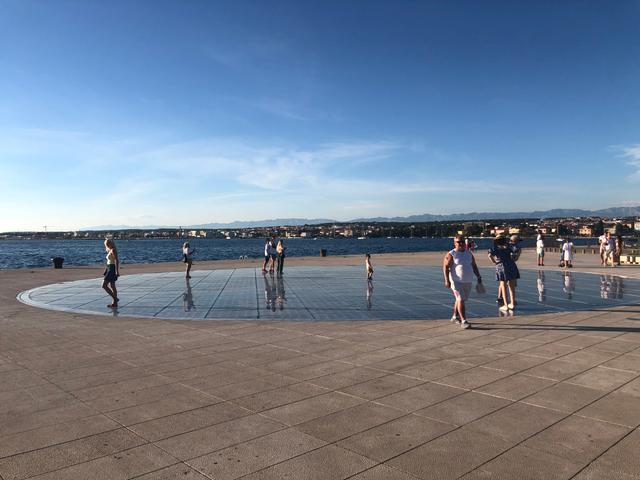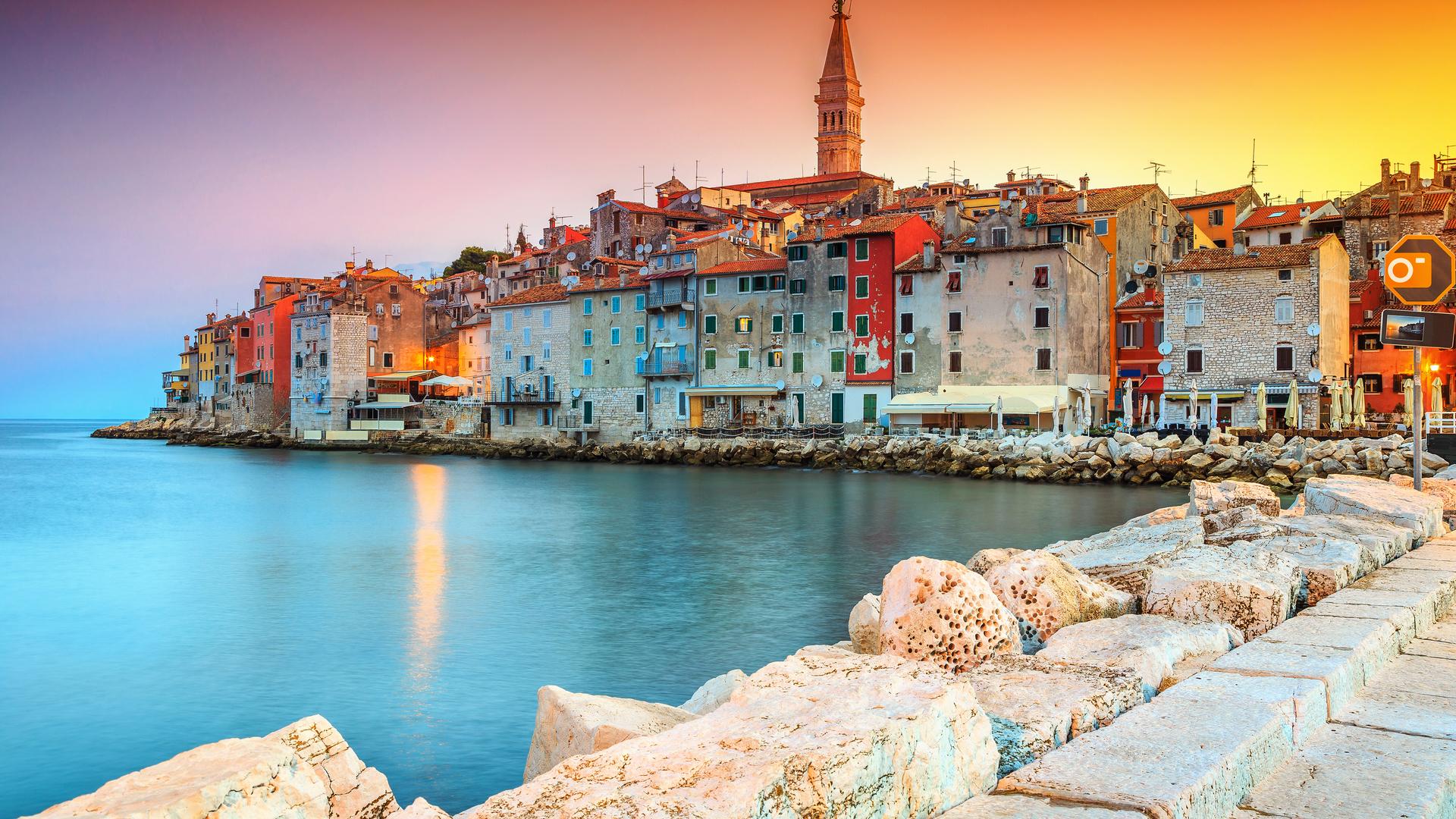Split - Krka - Rovinj
Similar popular transfers:
Private transfer Split to Rovinj via Krka National Park
Every summer You get asked maybe how can I get from Split to Rovinj or even maybe how can i get from Rovinj to Split. Maci Tours, Croatian transfer service has solution for that.
The best way to go and visit Rovinj is to book a private transfer from Split to Rovinj with MaciTours.
MaciTours is a Croatian transfer service which offers the best prices for a Croatian private transfer. MaciTours has at its disposal a fleet of luxurious and premium vehicles that will make your transfer as comfortable as possible.
Rovinj is located some 500 km from Split and the duration of your transfer is around 5 h .
The prices for a Split to Rovinj via National Park Krka private transfer start at 450 euros (the price is per vehicle, not per person).
While travelling from Split to Rovinj You maybe want to visit some other National park. On our way to Rovinj, We can visit also Plitvice Lakes or take direct transfer from Split to Rovinj. If You want to do some of these two options please book:
-
Private transfer from Split to Rovinj,
-
Private transfer from Split to Rovinj via Plitvice Lakes
How to get from Split to Rovinj
Travel between Split and Rovinj is probably one of the most popular route in Croatia during summer. In Rovinj You will feel mix of Italian and Croatian culture, while in Split You will see completely different culture. Like we mentioned above, the fastest and easiest way to get from Split to Rovinj is book a private transfer from Split to Rovinj. Private transfer between Split and Rovinj You can book easily in less then one minute using our booking form. After You have made a successful booking You don't need to worry about anything.
Alternatively, there is a bus which goes from Split to Rovinj but that ride will last about 08h00m, sometimes even more.
A few fact about the Krka National Park
The Krka National Park is one of numerous Croatian national parks that is named after the river Krka River which it encloses.
It is located along the middle-lower course of the Krka River in central Dalmatia.
Due to its special position and the mosaic distribution of various types of habitats, it is characterized by exceptionally rich and varied flora and fauna.
The Krka National Park features several places of interest.
The attractions and facilities that are available include various footpaths, sightseeing tours and presentations, boat trips, souvenir shops, a museum, and restaurants. There are also several archaeological remains of unpreserved fortresses in the park's vicinity dating back to ancient Roman times.
What to see while at the National Park
Skradinski buk is one of the most attractive parts of the park. This massive, clear, natural pool with high waterfalls at one end and cascades at the other is the focal point of the National Park. It is the lowest of the three sets of waterfalls formed along the Krka River.
Skradinski buk is considered to be one of the most beautiful calcium carbonate waterfalls in Europe because of the wealth and variety of geomorphological forms, vegetation, and the various effects caused by the play of light on the whirlpools.
Roški Slap, located near the village of Miljevci, is the second most popular attraction of the Krka National Park in terms of numbers of visitors. It is the sixth waterfall of the river Krka.The whole location is riddled with walking trails from which offer visitors wonderful views of the waterfalls. There is also a hiking trail and the location can be visited throughout the year. The easiest way to reach Roški Slap is to take one of the one of the many excursion boats operated by the Krka National Park, although the falls can also be reached with a public road.
Inside the park lies the island of Visovac, founded during the reign of Louis I of Hungary and home to the Roman Catholic Visovac Monastery that the Franciscans established in 1445 near the Miljevci village.
A few facts about Rovinj
Rovinj is a small town located on the western coast of the Istrian peninsula and is a popular tourist resort and a still active fishing port.
Rovinj was already a settlement of Venetian or Illyrian tribesbefore being captured by the Ancient Romans, who called it Arupinium or Mons Rubineus.
The town is built on an island close to the coast and later became connected to the mainland in 1763.
From 1283 to 1797 Rovinj was one of the most important towns in Istria governed by the Republic of Venice. During this period three town gates were constructed and Rovinj was fortified by two rows of defensive walls, remains of which can still be seen today.
It then belonged to Kingdom of Italyfrom 1918 to 1947, when it was ceded to socialist Yugoslavia.
The main economic activity in Rovinj is tourism and during peak season from May to September, its bars, restaurants and art galleries work long hours, while operating limited hours off-season.
Rovinj's main central thoroughfare is the fully pedestrian Carrera Street, with many independent shops and art galleries.
A farmer's market is located at the edge of the historic part of town, near Valdibora Square.
Rovinj is the second biggest tourist destination in the county, in terms of overnight stays. The two closest airports are Pula and Trieste in nearby Italy and during the summer season, low-cost airlines such as Ryanair operate direct flights from West Europe to both airports.
Also during the summer season, there is a direct high speed ferry link between Venice and Rovinj. High speed weekly lines to the Port of Ravennaand Cesenaticoare also available in the summer.
There are numerous hotels in Rovinj itself, and beds are abundant but usually overbooked in the summer months.
The city also has two luxury, 5-star boutique hotels, Hotel Monte Mulini and Hotel Lone, but there are also a handful of hotels on small islands surrounding Rovinj which are linked to the mainland by boats which go from the city centre to the hotel on the islands.
What to see while in Rovinj
Rovinj is known for its pristine beauty of the indented coastline and its forests, consisting of holm oak and Alpine pine trees.
The town has many old churches that you can visit, such as the famous St. Euphemia's Basilica, an iconic landmark of Rovinj, a Baroque church in the centre of the town where the relics of Saint Euphemia are preserved in a Roman sarcophagus dating to the sixth century.
Another site to visit is Monkodonj, a hill fort occupied about 1800--1200 BC during the Bronze Age.
Other places to visit are the beautiful Zlatni Rt Forest Park and the Limska Draga Fjord.
The Rovinj archipelago consists of 19 islands, which, along with the coastline, have been described as being "of outstanding natural beauty".
Itinerary
08:00 - Pickup and departure from your accomodation in Split.
09:00 - Explore National Park Krka, untouchable nature, singing of rare birds.
12:00 - Our journey to Rovinj from National Park Krka begins
15:00 - Stop for a lunch
17:00 - We arrive at your accomodation adress in Rovinj.
Transfer includes
• Pick up in Split and drop off in Rovinj via National Park Krka(or vice versa)
• Comfortable air-conditioned vehicle
• Professional knowledgeable English speaking driver
• All cost related to the vehicle -- gas, parking, highway tolls
• All costs related to the driver
• Available Wi-Fi in the vehicle
• 0.5l bottle of water per passenger



















